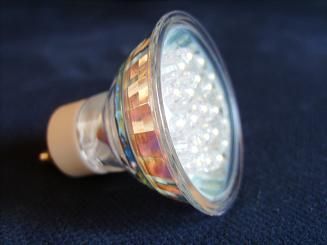Holding great promises for lower energy consumption and high conversion
efficiencies, lighting fixtures with solid-state light sources have the
potential to revolutionise the lighting industry. Further advances in
light-emitting efficiency at high currents, with excellent colour
rendering at low cost would significantly accelerate the widespread
uptake of this technology.
The EU-funded project
ALIGHT (AlGaInN materials on semi-polar templates for yellow emission in solid state lighting applications) is investigating the materials for these improved lighting devices by developing new large-area semi-polar templates using sapphire and silicon substrates. These semipolar templates help reduce the inbuilt electric fields in LEDs which affect their colour stability and efficiency and provide a large area, low cost platform for the growth of the LED layers. The project is also using the indium aluminium gallium nitride (InAlGaN) material for the light-emitting layers, targeting blue and yellow emission.
A major challenge is patterning of the wafer to generate and coalesce semi-polar planes on the structured sapphire substrate. To this end, scientists are evaluating the impact of substrate fine orientation and growth parameters through X-ray measurements, luminescence and atomic-scale imaging. Metalorganic and hydride vapour phase epitaxy (MOVPE and HVPE, respectively) are used to grow layers on the substrates. The active light-emitting material consists of quantum wells that have high optical efficiency and excellent colour purity.
Over the first project period, scientists performed significant work with regard to growing semi-polar GaN templates using different approaches.
Project partners used the HVPE technique to overgrow GaN on top of a GaN layer grown by MOVPE that was initially prepared on pre-structured sapphire. InGaN layers were then grown on semi-polar GaN templates with different growth temperatures. Semi-polar InGaN structures with different thicknesses were optimised, reaching high conversion light-emitting efficiencies in the blue and yellow spectra.
A move from growing devices on semi-polar substrates is helping to overcome issues related to reduction in LED light-emitting efficiency. Replacing current lighting technologies with solid-state lighting based on InGaN LEDs should enable a reduction in electricity by up to 5 %.
